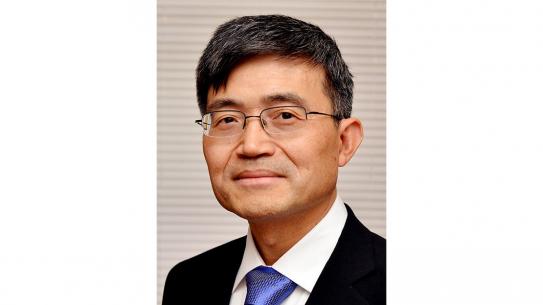NYU-Poly Brings Mechatronics to NASA Event
Members of NYU-Poly’s mechatronics outreach program rubbed shoulders with NASA astronauts from the final Atlantis mission earlier this month at a NASA educational event at New York’s Eventi Hotel.
The purpose of the event, dubbed “What’s Your Favorite Space?” by organizers, was to show the public NASA’s post-shuttle space program, said Sheri Beam, Idea Generator at NASA’s Langley Research Center. NASA’s manned Space Shuttle program generated unbridled public excitement and support over the past several decades, and while the final Atlantis mission brought an end to the shuttle program in July, there is plenty to look forward to. NASA’s future goals include putting new rovers on Mars and even sending astronauts back into space on new missions.
Atlantis astronauts Chris Ferguson, Doug Hurley, Sandy Magnus and Rex Walheim were on hand to discuss their historic mission and the future of human space flight.
In addition to the astronauts’ presentation, a series of interactive booths gave kids and parents hands-on experience with space-themed video games, astronaut gear and science projects.
And, of course, robots.
“Part of the idea of space exploration is relying on robots,” Beam said, “And that is how we came to invite NYU-Poly.”
Robots teach science, boost grades
NYU-Poly’s three booths highlighted several interactive robots, including a miniature Segway-like device made from LEGOS that balanced on two wheels, a string-bot that could carry a ball and then drop it into a cup while zipping along a taut string, a Roomba-like Create mobile robot controlled by an iPhone app developed by NYU-Poly’s Mechatronics Lab students, and a scanner that could recreate a hand drawing of a smiley face and project it onto a computer screen.
But, the robots were in attendance for more than just play: they were there to teach.
NYU-Poly conducts K-12 educational outreach programs, which teach both students and teachers about robotics and mechatronics. The latter is a field that melds mechanics, electronics, control theory and computer science to make smart products and processes, explained Vikram Kapila, professor of mechanical engineering and one of the programs’ founders. Kapila’s booths were an extension of these efforts.
“Robotics is very interesting for young kids,” he said, “They are already interested in learning about and playing with robots. But the moment that you hook their interest, then they realize that, okay, now I need this science or this particular math concept to get my robot to perform all these different functions.”
Kapila’s projects include the NSF-funded Science and Mechatronics Aided Research for Teachers (SMART), which helps middle and high school teachers build their own mechatronics projects in order to bring hands-on science back to the classroom, and the NSF-funded Applying Mechatronics to Promote Science (AMPS) and the philanthropy-funded Central Brooklyn STEM Initiative (CBSI), which send NYU-Poly graduate Fellows to more than 20 Brooklyn schools to engage them in math and science through robotics and mechatronics.
And, it’s working. The majority of the students in the programs improve their grades by a half or full letter. It’s also increasing their overall interest in science.
“Everybody in this country, not just NASA, knows how critical science, technology, engineering and math are to the future of our wellbeing, our economy and everything else,” NASA’s Beam added, “So one of the things that NASA wants to do is help young people to be interested in those areas because we think those things are cool. You know, that’s what we do every day.”




